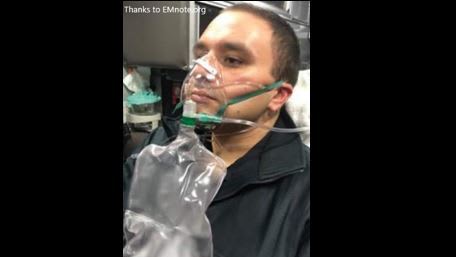Conscious and deep sedation in the ED.

Propofol---the milk of human kindness--- is a powerful short acting sedative agent but has no analgesic properties.

ECI says a minimum of 3. One to give the drugs and watch the airway/monitoring. The second to perform the procedure. The third to assist.
In reality often 4 is prudent--the 4th to scribe and observe from the end of the bed. And of course they need to be properly trained for their role.
Nitrous oxide is a good example of a drug that gives you conscious sedation.

Ketamine fortunately has a broad therapeutic window. Laryngospasm occurs in about 1% of patients.
Not great PR for dentists.

Beard Obese Old Toothless Snoring

Preoxygenation is vital in or to perform a safe procedure that requires a decrease in the level of consciousness.

There is no evidence to support any specific time for fasting before procedural sedation in the ED. Certainly in this case there is a clinical imperative to cardiovert which is more important than any fasting time (but I would not actually feed him!!).

Keep it simple and have it, along with a nasopharyngeal airway, handy when doing deep sedation.

Modern anaesthesia goes back to 1847 when Dr William Morton gave a public demonstration of ether anaesthesia in Boston, USA.